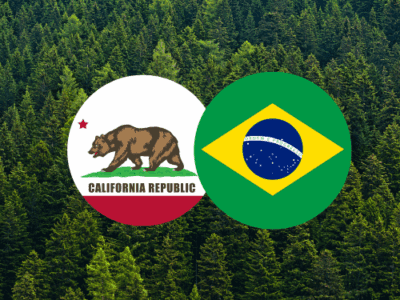Don’t hamstring the Endangered Species Act
The federal Endangered Species Act (ESA) is a vitally important bulwark in the legal protections for our environment in the United States. The ESA provides essential life support to a wide range of species on the edge of extinction, species such as our native salmon, grizzly bears, and California condors. The Act has helped to bring back species such as our national symbol, the bald eagle.
Of course, there are costs to the ESA. We might lose out on economic development opportunities because of concerns about habitat destruction. The resources we spend on restoring endangered species might be worth spending on other goals. And the ESA regulatory program has its share of paperwork and administrative costs. But when Congress passed the ESA in 1973, it concluded that species protection was generally speaking worth these costs. And Congress hasn’t changed its mind since then.
One of the key provisions of the ESA is what lawyers generally call “Section 7” – it’s the part of the Act that requires federal agencies, when they undertake activities such as development projects, to consult with the agency that implements the Act, the U.S. Fish and Wildlife Service (FWS). The point of that consultation process is to help both the agency proposing to undertake a development activity and FWS to work together to determine what the impacts of that action might be on endangered species. If the proposed action might cause serious harm to the species – what the Act calls “jeopardy” – it is prohibited unless it is changed to reduce or eliminate that harm.
Consultation is incredibly useful. It ensures that both the action agency and FWS gather relevant information about endangered species and potential impacts on those species; it ensures that a disinterested agency that is not committed to the development project (FWS) looks over the data and draws reasonable conclusions about what that data means; and it means that if the data show that the project might cause too much harm to endangered species, it will have to be stopped or changed. This consultation process is particularly important because in many cases we know very little about why species are endangered, or what the impacts from development projects might be on their species. By making the development and analysis of information by a neutral, outside agency a precondition for proceeding with the development project, the consultation process helps encourage high-quality research and analysis on endangered species. Better information means better regulation, better protection, and a better chance for recovery.
Unfortunately, the last administration has taken steps to undermine the consultation process. In particular, they have proposed changes to the regulations that implement the ESA that would create substantial loopholes in the Act’s consultation requirements. Those regulations would mean that a wide range of proposed federal actions might not require consultation. Those changes are ill-advised because in many cases the proposed actions that they would exempt from the consultation process are the types of actions for which we have very little information about their effects on endangered species. Indeed, in some cases, the proposed actions would be exempt from the consultation process precisely because we have very little information about their potential impacts on endangered species. But what we need if we are serious about protecting endangered species is not less information, but more.
Congress is currently considering allowing FWS to overturn these changes, and the Obama Administration has also indicated they may seek to overturn them on their own. Both Congress and the new Administration should work together to ensure that the ESA continues to work properly to protect endangered species now and in the future.
For a short article providing a summary and analysis of the changes to the consultation regulations, click here.





Reader Comments